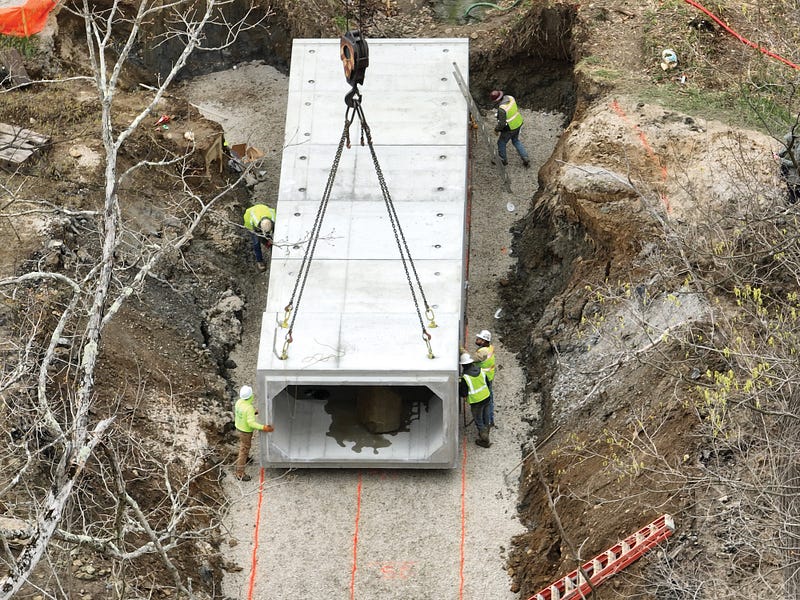Erosion control, wildlife habitat improvements and barrier removal bring new life to Sand Run Metro Park

Summit Metro Parks released a series of posts detailing these significant grant-funded improvements to protect the roads, trails and wildlife of a well-loved park. Read Part I, Part II, Part III and Part IV.
Nestled in the heart of Summit County, Sand Run Metro Park has long been cherished as a natural oasis by residents and visitors alike. With the infusion of $4 million in state and federal grants, this sprawling green space has undergone a remarkable transformation recently, thanks to the completion of an ambitious restoration project. With erosion control measures, enhanced wildlife habitats and the removal of fish migration barriers, the newly rejuvenated Sand Run Metro Park stands as a testament to the power of collaboration and environmental stewardship.
Erosion Control: Protecting Nature’s Masterpiece
One of the foremost challenges at Sand Run Metro Park was erosion, which threatened park infrastructure as well as the delicate balance of its ecosystem. Thanks to the dedicated efforts of environmental experts, comprehensive erosion control measures have been implemented throughout the park. Strategically placed retention walls, reinforced streambanks and improved stormwater management systems have successfully curbed erosion and preserved the natural beauty of Sand Run. Now, visitors can marvel at the park’s breathtaking landscapes without worrying about the irreversible damage caused by unchecked runoff.

Wildlife Habitat Improvements: Embracing Biodiversity
The restoration project also focused on enhancing wildlife habitats, ensuring the diverse array of species that call the park home have a flourishing ecosystem to thrive in. Through careful planning and expert guidance, the project resulted in new habitats, the restoration of existing ones and the implementation of sustainable practices to support local flora and fauna. These habitat improvements include the planting of native vegetation, the creation of nesting areas through utilization of natural materials and the installation of wildlife-friendly structures. As a result, Sand Run Metro Park can continue to be a haven for wildlife, providing refuge for common and rare species and contributing to the overall biodiversity of the region.

Migration Barrier Removal: Restoring Natural Connectivity
One of the most significant accomplishments of the Sand Run Metro Park restoration project is the successful removal of several fish migration barriers within the park. Previously, manmade obstacles such as a false waterfall and a railroad crossing near the service center hindered the natural movement of fish, disrupting their life cycles and endangering their populations. These barriers have now been mitigated or removed entirely, allowing for the re-establishment of natural fish migration routes. This achievement is not only vital for the health and sustainability of aquatic ecosystems, but also underscores the importance of preserving and restoring natural connectivity within our parks.

The completion of the restoration project is cause for celebration, serving as a shining example of the positive impact of collaboration and dedicated environmental stewardship. This work will preserve park infrastructure and allow Sand Run Metro Park to continue to thrive for the next century, ensuring that future generations can continue to appreciate and enjoy this natural gem for years to come. As we celebrate this extraordinary achievement, we also look to the future, which holds additional opportunities to improve this land for visitors and wildlife alike. Park staff are evaluating challenges posed by the vehicle ford, as well as working toward the completion of roadway removal and trail construction on the east end of Sand Run Parkway, between Portage Path and Merriman Road.
With the financial support of state and federal grants, the park district’s transformative endeavor has breathed new life into Sand Run Metro Park. Let this remarkable achievement inspire us all to cherish and protect our natural treasures, recognizing that by working together, we can create a sustainable future for both the natural world around us and ourselves.
For more stories like this, check out Green Islands magazine, a bi-monthly publication from Summit Metro Parks. Summit County residents can sign up to receive the publication at home free of charge.